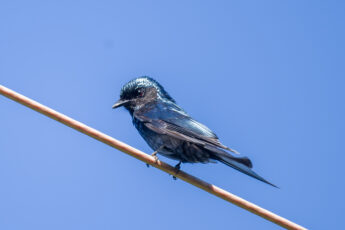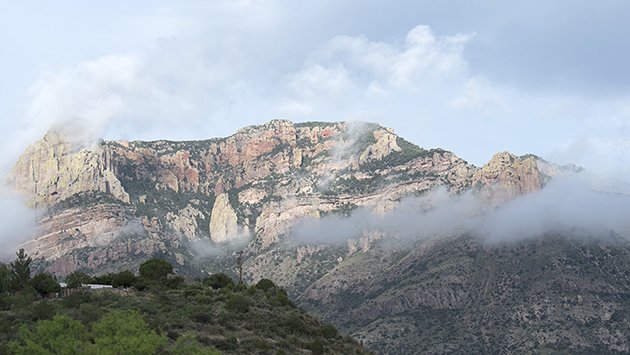Whilst I have left the comforts of a salary long behind me by leaving the airline I worked for, fortunately (I suppose, he says grudgingly) two of my birding mates are still there putting in the long hours and seeing some fantastic birds. One of them, Redgannet, is a ‘Beat Writer’ here on 10,000 Birds, and the other, Graham Langley, occasionally dangles the odd carrot in front of my bird hungry nose while telling me that, yes, you made the right decision to leave: anymore posts like these and I may start to wonder…
Barbados
The days between Christmas and New Year’s Day found me in Barbados, a country that, if I’m frank, I have never been excited about going too. That is a sentiment stirred up by reports I’ve read from other birders explaining how almost all native habitat was removed two centuries ago by slaves so that British planters could grow sugarcane. That, coupled with its slightly isolated situation just to the east of the main island chain of the Caribbean Lesser Antilles, means that this small country has an even smaller avifauna and, until recently no endemics. (More of that later). Unlike for example St Lucia or St. Vincent, there is no virgin forest with its attendant parrots and being a bit adrift in the Atlantic most of the Lesser Antillean endemics fail to reach there either. To compensate for that however because of it southern and easterly position this turns out to be one of the best places in the Americas to see Eurasian birds as I was to discover. So, as I was being paid to go and, not one to look a gift horse in the mouth, I set off with my new binoculars, Raffaele’s Birds of The West Indies and hope for the best.

View from hotel over Bridgetown Bay
The hotel breakfast terrace provided my first birds of the day and an easier start is unimaginable. Zenaida Doves coo-ed and paraded around my feet their purple neck patches rippling in the sunshine, noisy Carib Grackles stole food from the tables and the newly-split and therefore endemic species Barbados Bullfinch joined jaunty Bananquits raiding the sugarpots. Unlike Carib Grackles on islands nearby Bajan (Barbadians call themselves that) birds follow the South American pattern where both sexes are black making them a candidate for species status. The Bullfinch has gone the other way in that the males are all brown like the females and unlike the black males of all other Bullfinch species in the Caribbean.

Barbados Bullfinch at breakfast – not a great pic
I had read that “the best site on the island for birding” is Graeme Hall Nature Sanctuary on the south coast and, fortuitously, just two miles and a B$1.50 bus ride from my hotel. A Bajan Dollar is worth US$0.50. The bus ride was cheap, cramped and came with loud urban R&B from the sound system but it all added to the atmosphere.
Graeme Hall has an impressive entrance, with a fine car park and good signage. Unfortunately that’s where the impression stops. It might be very well set up but it has been closed by its owner for some months because of an ongoing dispute with the Barbados government over land development. This means that access is limited to a lawn and viewing platform overlooking a medium-sized lake surrounded by tall trees and mangroves. Access is via a café and is only open to those who buy something.

Graeme Hall
Islands in the lake house an egretry with spectacular comings and going and the challenge of trying to find the Little Egrets amongst the Snowys and Cattles. Little Egrets colonised Barbados a few years ago and now number 80 pairs, many at Graeme Hall. An Osprey of the North American race watched from a snag as two endangered (not by the osprey) Caribbean Coots pecked at weeds in a corner of the lake. The Caribbean form of Yellow (Golden) Warbler appeared briefly. Surely this bird is a candidate for species status too being non-migratory and mangrove-loving. No such doubts about the wonderful Antillean Crested Hummingbirds and Green-throated Caribs that fed around the flower beds. A Caribbean Elaenia hunted the bushes and a troop of passing introduced Vervet Monkeys completed the scene. That’s all the reserve offers but fortunately a path 150 yards to the east of the entrance gives access to some excellent swamps with more heron species, Green, Great Blue and Tricoloured and a very accommodating Belted Kingfisher. Shiny Cowbirds seemed to be everywhere.

Marshes near Graeme Hall
The following day I had a car and headed east calling briefly at Oistins fish docks to see Magnificent Frigate-birds, a few gulls and flocks of Ruddy Turnstones feed on the offal then on to Chancery Lane Marsh near to the airport where I found several northern duck species including a male Eurasian Wigeon, breeding Caribbean Coot but not the star bird. (More of him later). At the nearby Cricket Ground in Inch Marlowe the grass was long and at least ten Grassland Yellow-finches, a bird I’d previously only seen once in Argentina, were feeding voraciously.

Oistins coast

Barbados Bullfinch on my car roof at Chancery Lane
By day four the supply of new bird species seemed to run dry but then I received a message from local bird Eddie Massiah who I had previously contacted for ideas through BirdingPal. He invited me to join him at 6am on New Year’s Day. Now that’s keen! So, at dawn and four hours after I had gone to bed I was in his car heading out to a maze of small shooting ponds on the East Coast. Traditionally, local landowners would sport themselves by shooting migrant shorebirds once the cane harvest was finished. To make this easier they built ponds and marshes around hunting hides and chalets and simply waited for birds to arrive. The tradition continues and these sites are out of bounds to birders in autumn but at other times access is unrestricted, if you can find them down the sandy lanes of private estates. Eddie showed me about eight such sites, each with a cage of captive shorebirds used as decoys in the season.

Decoy birds at Congo Road Swamp
This is a case of traditional hunting and local conservationists working in tandem. Agreements are set that rare and unusual birds are left alone and even encouraged, birders are welcome and relationships are good. Hosts of Northern shorebirds picked at the mud. Greater Yellowlegs, Spotted Sandpipers, Grey and Semipalmated Plovers and Wilson’s Snipe were common and even a Greater Scaup put in a very southerly appearance but the best shorebirds on the island were out of reach, a pair of Southern Lapwings on a pond in northern Barbados were too far away to visit. Nevertheless the best bird on the island was at Congo Road in all its glory, a Eurasian Spoonbill, one of a pair that arrived a few months ago hot on the heels of another in St. Lucia. These apparently represent the first representatives of this beautifully elegant species in North America. It was a privilege to watch it sift through the waters of the private lagoon, knowing it had crossed an ocean safely and the shoot owner had protected it from his hunting friends.

The rocky North coast






 New writers welcome – please contact us for details.
New writers welcome – please contact us for details.

















By day four I was beginning to wonder if we worked for the same company!